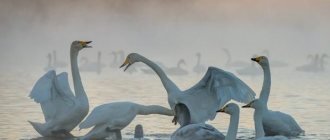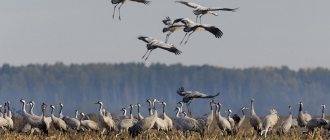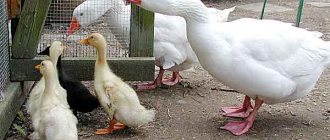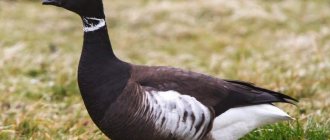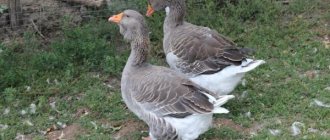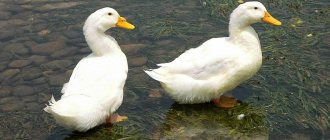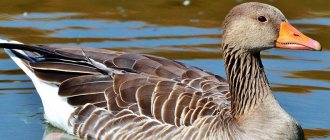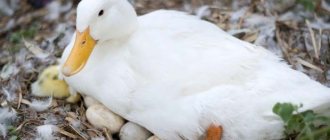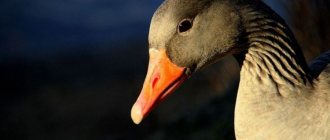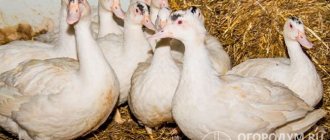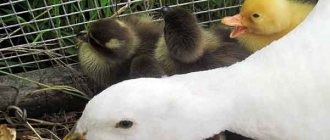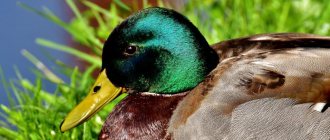Many wild birds (including ducks, geese, cranes) are migratory. They spend the warm season in the north, and with the onset of cold weather they move to the southern regions. Many people learned about where geese and ducks winter in school. The wintering place is not chosen by birds by chance. They know their destination very well, gather in flocks, and the flight is completed in the shortest possible time and with minimal losses.
Flight Features
Preparations for departure begin in the spring. At the end of June - mid-July, adult birds molt. They climb deep into the reeds, where they try to be less noticeable to predators. At the end of August, the molting ends, and the wings of the young animals become stronger, which serves as the first signal for the upcoming migration.
Geese ready to travel form flocks of tens to hundreds of individuals. Departure time depends on the place where the birds spent the summer. Thus, geese fly away from the northern regions of Russia in mid-September, but inhabitants of mid-latitudes may delay their flight until October and even November. Birds rarely stay for the winter; this behavior is considered abnormal and is associated with climate change.
Birds fly in a line or wedge, rise to considerable heights and can cover enormous distances. The flight takes place during the daytime. Wild geese spend the night on the surface of the reservoir, resting and replenishing their strength with food. During the rest period, small flocks unite, but after its completion they break up and fly separately.
During the flight, weak birds may die, but the percentage of those who reached the final goal is still quite large.
Species of wild geese
Today, among all wild geese, two species are distinguished: geese and geese. Let's look at how they differ in more detail.
Grey goose
Gray - this species is the most popular and largest in number, which lives on the Eurasian mainland. It has a gray-brown color, the belly and chest are white. This is the largest and most powerful goose of all, its weight can approach 5 kg. The gray feathered bird has a large, massive body, the length of which can approach 90 cm.
A distinctive feature of the bird is the unusual color of its beak and legs - grayish-pink.
It is difficult to determine gender differences by appearance; males are only slightly larger than females. The gray goose has a wide habitat and is found in Western Europe, throughout the former USSR, as well as in Asia. The lifespan of these geese is up to 80 years.
Gooseberry
The bird is found throughout Europe. These wild geese have gray feathers, orange legs and a yellow and black bill. The main distinguishing feature of the bean goose is its weight, which is slightly less than the gray goose and amounts to 4.5 kg.
There are two subspecies of bean grass:
- f. middendorffii – the largest of the species;
- Serrirostris is the largest beak of this species.
Geese of this variety gather in flocks of 60 individuals. They spend the summer near bodies of water in the tundra and taiga, and in the winter months they feed mainly on plowed fields. Flocks of bean goose fly in an angle or wedge.
Traditionally, ornithologists identify four species of bean goose, which differ slightly in external characteristics (shade of plumage, shape and size of beak, carcass weight):
- Taiga.
- European.
- East Siberian.
- Short-billed.
Of the birds living on our territory, bean goose birds are the earliest to migrate; you can see representatives in their homeland already in early spring.
Hunting for birds is allowed, but it is very difficult, since these geese are unusually careful and sensitive . Therefore, getting close to them is almost impossible.
White or polar
One of the most beautiful representatives of wild geese. The bird is distinguished by snow-white feathers and a black stripe at the ends of its wings. The average weight of the bird is 5 kg, the body length is on average about 80 cm.
Did you know? To protect eggs from a dangerous predator - the arctic fox, female white geese prefer to build nests near the habitats of the polar owl, which is a natural enemy for the arctic fox.
By nature: very noisy; when a flock flies by, it can be heard from afar. The white goose is quite rare in Russia - only on Wrangel Island, from which it flies to the Gulf of Mexico or south for the winter.
Sukhonos
A distinctive feature of the bird is its dark beak with a large bump at the base . The upper part of the body is dark brown, the middle part is slightly lighter, but the back and sides of the suknos are striped brown. Prefers to live in the steppe or mountainous regions of Siberia (southern), Mongolia, China (northern part). Weighs approximately 4.8 kg.
They winter mainly in eastern China or Japan. The difference between ganders and geese is pronounced: the male has a characteristic growth on his beak. In captivity, birds live up to 25 years. The lifespan in the wild of the sukhnosa is about 20 years.
Mountain
The breed is distinguished by the highest flight; geese can rise to a height of 10 km. The goose is perfectly adapted to flight, it is light - only 3.5 kg and has powerful wings. The birds are gray in color, with a snow-white head and neck. A pair of black stripes are clearly visible in the back of the head. The color of the beak and limbs is yellow. Birds are found on mountain rivers and lakes.
This goose got its name due to its habitat. Birds nest in the Pamirs, Tien Shan, and Altai. There they can feed on numerous shellfish and fish. Geese also consume green food, which they collect on the banks. Geese fly to India for the winter
Where do ducks and geese from Russia winter?
Transcaucasia, the southern tip of the Caspian Sea, the coast of the Azov, Baltic and Mediterranean seas, Asia Minor, Iran, India, the lower reaches of the Danube and even Great Britain are places where geese fly from different parts of Russia. The choice of location depends on:
- the degree of its remoteness from the main habitat region;
- presence of a warm climate;
- abundance of water and food sources.
Thus, some ducks spend the winter in Turkmenistan, Azerbaijan and Kyrgyzstan. Large concentrations of waterfowl are observed from year to year on the famous Lake Issyk-Kul, as well as in the Black Sea basin.
When going for the winter, birds choose a place that is most similar to where they spent the summer. The opinion that all representatives of the bird family fly exclusively to southern countries is erroneous. The choice of route is determined by living conditions and the availability of food supply. So, if, flying over a body of water not covered with ice, the birds find it suitable for wintering, then nothing will prevent them from descending and spending the cold season here. This behavior explains the unexpected appearance of ducks in regions with a fairly harsh climate.
Habitats
Habitats depend on the species. They build their nests, depending on the species, in colonies or alone. In one season, birds breed only once. It is common for wild geese to spend most of their time on land, which sets them apart from ducks and swans. They can live on the coast of fresh and salt water bodies. Geese have webbed feet, and thanks to this they can swim and dive well, paddling with them like flippers. When flying, they emit characteristic screams.
Main places of stay:
- in damp meadows,
- in overgrown swampy areas,
- at the mouths of rivers,
- near the stream,
- near lakes, ponds, etc.
Also, when organizing a nest, wild geese prefer to live next to birds of prey (falcons, buzzards), which protect their territory from predatory animals.
Summary
Geese are nomadic birds. A sharp drop in air temperature is a serious reason for moving them to regions with a milder climate. Powerful wings and a durable body allow them to make long, sometimes non-stop flights.
Mandatory conditions for a wintering site are the presence of a body of water (rivers, lakes or seas) that is rich in food and does not freeze for the winter. In search of wintering grounds, birds overcome endless steppes and oceans.
Preparation for departure begins after the completion of molting and the chicks fledging. The first duck wedges appear over the lake or river surface in September-October. When saying goodbye to the lands that shelter them, the birds make loud sounds, so even people uninitiated in the secrets of their wintering grounds know that they are flying away.
Wild geese and ducks annually fly to warmer climes for the winter. The main reason is winter cold and lack of food. Bird migration does not occur spontaneously. Birds prepare for this event and fly away to warmer climes in flocks, having previously formed a formation and adhered to a certain direction when moving south.
Reasons for flying
Ducks living in their natural environment leave their homes every fall and fly to warmer climes for the winter. The tendency to migrate is genetically inherent in these birds. There are two main reasons for the annual relocation of birds:
- The main reason for the autumn migration of wild ducks and geese is seasonal changes in weather conditions. The cold weather is coming in Russia, and the birds are migrating to a new place of residence, where the climate is milder and warmer. A common migration direction for geese and ducks is European countries located in the southern part of the continent. In winter, the ponds there do not freeze, and the ducks can easily wait out the cold.
- The second reason is also related to the change of seasons. During the cold season it is difficult to get food. Therefore, wild ducks prefer to stay in warm regions in winter, where there is no shortage of food and water.
How long does the flight take?
The duration of the flight is affected by the speed and distance to the wintering site. Birds fly at different speeds. For example, swallows reach speeds of up to 55-60 km/h, finches and siskins - 55 km/h, waders on average up to 90 km/h. Birds fly intermittently as they stop to rest and feed; stops can last from one to ten days. Therefore, the flight for some birds takes up to four months. For example, passerines spend two to three months migrating from northern Europe to Central Africa. The duration of the flight is significantly affected by weather conditions.
Many wild birds (including ducks, geese, cranes) are migratory. They spend the warm season in the north, and with the onset of cold weather they move to the southern regions. Many people learned about where geese and ducks winter in school. The wintering place is not chosen by birds by chance. They know their destination very well, gather in flocks, and the flight is completed in the shortest possible time and with minimal losses.
Types of Migration
Seasonal migration of birds is a way to survive the winter cold and lack of food. Ornithologists distinguish three types of such temporary migration of birds:
- The first type of bird migration is associated with the birth of offspring. As soon as the ducklings hatched from the shell grow up and get a little stronger, the birds gather in flocks and fly away. Moreover, the first group of “migrants” consists of wild drakes. Next come the chicks, and then the ducks.
- The timing of the second migration is associated with seasonal molting and the appearance of new feathers. Birds spend this period in the transit (transition) zone. For example, ducks wintering in the Mediterranean wait out the molting time on the banks of the Volga.
- The last type is associated with the return of birds to their homeland , where the summer season takes place and a new generation is born. At the end of this period, the ducks gather in flocks again and fly south for the winter.
Wintering areas for our ducks
Mallards, as well as teals, which live in the western part of the former Soviet Union, travel to the west in September, namely to the Baltic states, closer to the North Sea. It is from there that they begin their journey south. Ducks spend the winter in western Europe.
Movement pattern of migratory waterfowl
Most often our ducks stop in the following countries:
- Territory of the former Yugoslavia.
- Southern part of Germany.
- Italian coast.
- Great Britain.
- France.
Some birds cross the expanses of the Mediterranean Sea and stop in Algeria, on the banks of the Nile in Egypt, and also in Tunisia. Birds from the Volga region and the western part of Siberia head to the southern coast of the Volga, Don and Ural, after which they fly past the shores of the Azov and Black Seas to the Caucasus.
Next, the ducks are separated. Some of them will remain here throughout the winter, others will fly to Iran and Iraq, and others to northern Turkey. Many mallards, a little before reaching Transcaucasia, head through Ukraine to Romania and other Balkan states.
Preparing for the flight
The migration of mallards and other species to wintering does not begin suddenly. Ducks prepare in advance for a long journey.
The first thing to do is gain weight. There is a long journey ahead, and it will not always be possible to get food for yourself. Birds typically gain 15–20% additional body weight before migrating. And the weight of ducks wintering in areas remote from Russia doubles.
The migration of birds begins at night. Although ducks move not only in the dark, but also during the day. Birds choose warm, clear weather.
Wild representatives of the duck family are very sensitive to climate change. If the need arises, mallards can fly away spontaneously.
General signs
Wild geese are classified as members of the duck family. But there are several differences:
- Long neck,
- strong physique,
- big beak
Geese are significantly smaller in size than swans, their necks are shorter, and their bodies are smaller and lighter. The head has full plumage. The wild goose is significantly larger than ducks. Their beak, unlike ducks, is narrower and higher. The plumage of females and males is the same. Its main colors are white, gray, black and brown.
Wild geese are distinguished by their beautiful and varied plumage of brown, grey, white and black.
Along the edge of the beak, geese have special ridge plates that prevent food from jumping out of the beak during the process of filtering it from water or silt. These plates also serve as teeth when collecting green food in the pasture.
Where do ducks and geese fly from Russia?
The main goal of bird migration is to find a new habitat with a suitable climate and an abundance of food and drink. With the onset of cold weather, wild birds fly away from Russia and move westward. People who notice the disappearance of waterfowl from lakes and ponds are interested in where the ducks go in winter and to which countries wild mallards go.
Main destinations:
- countries of the Balkan Peninsula;
- southern Europe (Mediterranean shores);
- states of Asia Minor (Türkiye, Iran);
- Caucasus region;
- countries of North Africa (belonging to the Mediterranean basin);
- Caspian or Azov coast.
It happens that wild ducks and geese spend the winter on the territory of the Baltic states. There is access to the sea, as well as enough food to survive the cold.
Many birds fly from our country to France, where they stop on the banks of the Loire and Rhine.
The places where ducks settle for the winter are not permanent. They change for various reasons. This is mainly due to lack of food. When one area becomes unsuitable for winter habitation, mallards look for another.
Goose hunting equipment
Now let's talk a little about equipment. Surely, an attentive hunter has long wondered: how to camouflage on a bare sand spit, away from bushes, thickets of sedge and other grass? At one time, I racked my brains in exactly the same way. As a result, two methods were found.
1. Method one. A hole about two meters in size is dug in the sand. The dug sand is laid out as a parapet along the edges. Large cardboard boxes are used to cover the pit. The color of the cardboard (without the design) is very similar to the color of sand. Cardboard boxes are stacked in three stripes. The first strip covers the legs almost to the waist; the strip is sprinkled with sand. The second strip is cut in half, the edges are dug in, and the result is something like flaps that the hunter folds back, taking a sitting position. The third stripe covers the head.
2. Method two. The same hole is dug, a recumbent cover like an American one, which is covered with burlap, is installed in it.
Migration Features
The ability of birds living in the wild to migrate has not been fully studied. Many people still do not quite understand where geese and ducks fly in the fall, how birds sense the onset of migration time and how they determine that it is time to return back. Ornithologists do not have an exact answer to all these questions, so the study of the migration phenomenon is still ongoing.
It is believed that the desire of ducks to winter in warm countries is genetic. After all, they begin to prepare for winter long before the reservoirs freeze.
The process of wild birds migrating from place to place is characterized by a number of features. The very principle of constructing a flock of geese flying south is also interesting.
Spring and autumn flights
Wild drakes and ducks leave their homes in the fall and return in the spring. The process of migration of birds in different seasons is somewhat different.
Ducks begin to prepare for autumn migration in advance:
- Birds try to gain more weight.
- Ducks climb into the reeds growing in a pond or other body of water to be out of the reach of predators.
- Closer to September, the seasonal molting ends, and the birds acquire new plumage.
By this time, the young chicks are already growing up, gaining strength and are quite capable of flying with their parents.
If ducks live in cold regions, for example, in Siberia, then the migration may begin earlier. In this case, the birds wait out the molt somewhere in the southern regions of Russia.
Individuals living in the middle latitudes of our country begin their journey in October.
In the spring, the ducks return back in the same flock. Summer time is the period of nesting and breeding of a new generation of ducklings.
How long do ducks fly without stopping?
During the autumn migration, colder temperatures promote faster departure. Ducks
can move south
without stopping
, covering long distances - 150-200 km.
Interesting materials:
What indoor flowers grow in small pots? What crops grow in the shade? What deciduous trees grow in Crimea? What vegetables and fruits grow in Russia? What vegetables grow well in sandy soil? What vegetables grow in neutral soil? What vegetables grow in alkaline soil? What vegetables grow in Russia? What vegetable crops grow well in sandy soils? What vegetables grow well in the shade?
How to keep ducks in winter
Not all wild geese are migratory. Some representatives of the duck family lead a sedentary life and, with the onset of cold weather, remain in the same place. These birds are forced to get used to and adapt to the harsh climate.
Duck breeding is common in modern livestock farming. Domesticated birds are unpretentious and do not require large maintenance costs. Ducks living on the farm winter there without flying anywhere. During the cold season, the owner takes care of the charges.
Despite the unpretentiousness of domestic birds, it is still recommended to comply with a number of requirements when keeping ducks in winter:
- The main condition is to maintain cleanliness in the barn . It is necessary to regularly clean the premises, wash feeders and drinking bowls.
- It is necessary to regularly ventilate the place where pets are kept, while avoiding drafts.
- The required temperature should , not allowing it to drop to –5℃.
- It is recommended to include wet food in the diet of ducks in winter. You can add grain to dry mixtures. And, of course, during this period it is necessary to provide pets with vitamins and minerals.
- If your domestic duck starts laying eggs in winter, then you should stop walking in the early hours. Birds tend to lay flight at night or early in the morning. Because of this, the female can leave her eggs right on the street.
- During the period when the duck is laying eggs, you should not scare it by suddenly and noisily entering the barn. This may affect your pet's productivity. Some farmers advise leaving low lighting at night.
Members of the duck family are rarely exposed to disease. You just need to keep the house clean and feed the birds properly. Compliance with the requirements will help keep your pets healthy and productive.
The ability of wild geese and ducks to change their place of residence annually still excites the minds of ornithological specialists. This is also of interest to ordinary people. The study of bird migrations continues, although the main reasons for this behavior of birds can already be identified. These are climate change and food shortages. The tendency to constantly “move” is genetically inherent in migratory birds. After all, mallards living in natural conditions must adapt and survive.
What is known from the literature?
At the end of the last century, visual census data were published. In the article “Features of migration of waterbirds in Belarus,” the spring migration of geese is described as follows:
“In spring, most geese migrate in east and northeast directions. In this case, a certain pattern in the direction of flight is observed. Thus, in the southern part of Belarus the eastern direction predominates, which coincides with the location of the Pripyat riverbed from west to east. The vast majority of geese fly to the east in this zone: 82.7% in Belovezhskaya Pushcha, 87.1% in the Pripyat floodplain (Pripyatsky Nature Reserve). In the south-eastern point of Belarus (the territory adjacent to the Chernobyl nuclear power plant), where the river bed. Pripyat turns to the southeast, only 20% of geese continue to adhere to the Pripyat floodplain, 34% flies further to the east, and the majority - 42% - turns to the northeast.
In the central part of the republic, most geese migrate in a northeast direction. Thus, in the floodplain of the Neman River, which flows from southeast to northwest, the main direction of flight of geese was northeast (58%) and east (25%). In the vicinity of Minsk, the eastern direction predominated (52.8% of recorded birds), 24.2% flew to the southeast and 20.3% to the northeast. In the floodplain of the river. On the Berezina River, most geese migrate in a north-easterly direction (49%).”
Thus, in spring the general direction of movement of migrating geese is from west to east.
Stuffed animals for goose hunting
The next question is the choice of stuffed animals and their quantity. In the fall, the goose is much less careful than in the spring, so I use few stuffed animals - six to eight pieces. Sometimes twelve.
All stuffed animals are full body, the manufacturer is not important. A decoy is required, and the return of shot geese is not uncommon. Birds at this time of year weigh little, so they fight well with a “three” even at extreme distances.
Satellite data
Modern technologies make it possible to monitor the migration of geese in real time. Bird tracking using GPS navigation has been carried out by many organizations around the world for several years. The most comprehensive and successful project tracks the migrations of geese wintering in Western Europe. The German website blessgans.de provides its visitors with the opportunity to monitor goose migration through the traditional Google Earth service.
Some geese wintering in Western Europe fly north of Belarus in the spring. One of the main spring gathering places for geese migrating through this region is the Neman River delta. Next, the birds fly to nesting sites located in the tundra of the European North of Russia.
But some can travel much further.
Another part of the geese flies through Belarus in the spring. We can say that she is less fortunate, because in the spring our birds do not receive a warm welcome at all.
And lastly, information from our Bird Banding Center
We currently have information from more than two hundred ringed birds. The average age of white-fronted geese harvested is more than three years (1046 days). The maximum age recorded from banding data is over 22 years. However, given the fact that the adult bird was ringed, its age was at least 24 years.
Based on the information received from ringed birds, it can be stated that the main wintering grounds of white-fronted geese migrating through Belarus are in Western Europe (the Netherlands, Germany, England). In 139 of 143 cases they were ringed in the Netherlands.
Information from the places where birds flying through the territory of Belarus nest is scarce, but according to available data, it can be said that the nesting area of white-fronted geese extends from the White Sea coast to at least Taimyr.
conclusions
In principle, the new data has not changed much in our understanding of the spring migration routes of white-fronted geese. Its general direction on the territory of our country is eastern and northeastern. Part of the white-fronted goose population is characterized by a loop-like migration: in the spring from Western Europe they first fly east, and in the central regions of Russia and Northern Kazakhstan they turn north. In autumn, these birds return to their wintering grounds by the shortest route along the Baltic Sea coast, only partially touching Belarus.
Goose
The wild goose is a subspecies of the wild goose that belongs to the category of waterfowl. Geese are very similar in appearance to geese, but are smaller in size. Their beak is shorter, short legs are predominantly black. The feathers are predominantly dark in color: brown or black. Birds cannot cackle. Their cry is similar to the barking of a dog. The number of their species is also numerous.
There are several subspecies of geese, which will be discussed below.
Canadian
This is the most famous goose, breeding in Canada and Alaska, it is called the North American goose. The size and plumage are different for each of the twelve subspecies, which live in different habitats. The maximum number of birds lives in the Arctic to the northern borders of the United States.
This species of goose, sometimes called the American goose
Geese are found in small numbers in the north of Great Britain and Scandinavia. The color is grayish-brown, the chest is snow-white, the neck and head are dark. This species is distinguished by white spots on the cheeks and a milky stripe on the tail. It is often kept in captivity.
